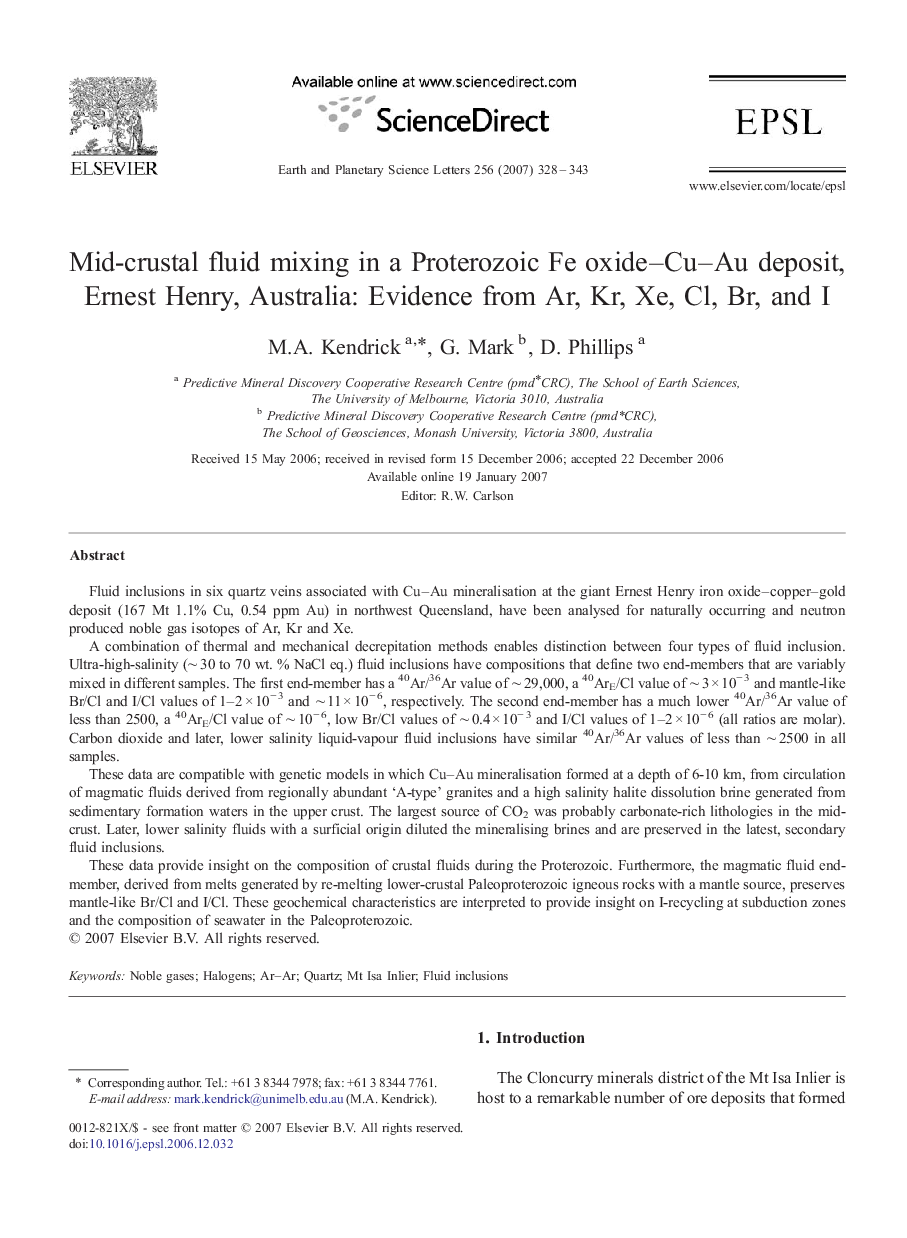| کد مقاله | کد نشریه | سال انتشار | مقاله انگلیسی | نسخه تمام متن |
|---|---|---|---|---|
| 4680584 | 1634922 | 2007 | 16 صفحه PDF | دانلود رایگان |

Fluid inclusions in six quartz veins associated with Cu–Au mineralisation at the giant Ernest Henry iron oxide–copper–gold deposit (167 Mt 1.1% Cu, 0.54 ppm Au) in northwest Queensland, have been analysed for naturally occurring and neutron produced noble gas isotopes of Ar, Kr and Xe.A combination of thermal and mechanical decrepitation methods enables distinction between four types of fluid inclusion. Ultra-high-salinity (∼ 30 to 70 wt. % NaCl eq.) fluid inclusions have compositions that define two end-members that are variably mixed in different samples. The first end-member has a 40Ar/36Ar value of ∼ 29,000, a 40ArE/Cl value of ∼ 3 × 10− 3 and mantle-like Br/Cl and I/Cl values of 1–2 × 10− 3 and ∼ 11 × 10− 6, respectively. The second end-member has a much lower 40Ar/36Ar value of less than 2500, a 40ArE/Cl value of ∼ 10− 6, low Br/Cl values of ∼ 0.4 × 10− 3 and I/Cl values of 1–2 × 10− 6 (all ratios are molar). Carbon dioxide and later, lower salinity liquid-vapour fluid inclusions have similar 40Ar/36Ar values of less than ∼ 2500 in all samples.These data are compatible with genetic models in which Cu–Au mineralisation formed at a depth of 6-10 km, from circulation of magmatic fluids derived from regionally abundant ‘A-type’ granites and a high salinity halite dissolution brine generated from sedimentary formation waters in the upper crust. The largest source of CO2 was probably carbonate-rich lithologies in the mid-crust. Later, lower salinity fluids with a surficial origin diluted the mineralising brines and are preserved in the latest, secondary fluid inclusions.These data provide insight on the composition of crustal fluids during the Proterozoic. Furthermore, the magmatic fluid end-member, derived from melts generated by re-melting lower-crustal Paleoproterozoic igneous rocks with a mantle source, preserves mantle-like Br/Cl and I/Cl. These geochemical characteristics are interpreted to provide insight on I-recycling at subduction zones and the composition of seawater in the Paleoproterozoic.
Journal: Earth and Planetary Science Letters - Volume 256, Issues 3–4, 30 April 2007, Pages 328–343